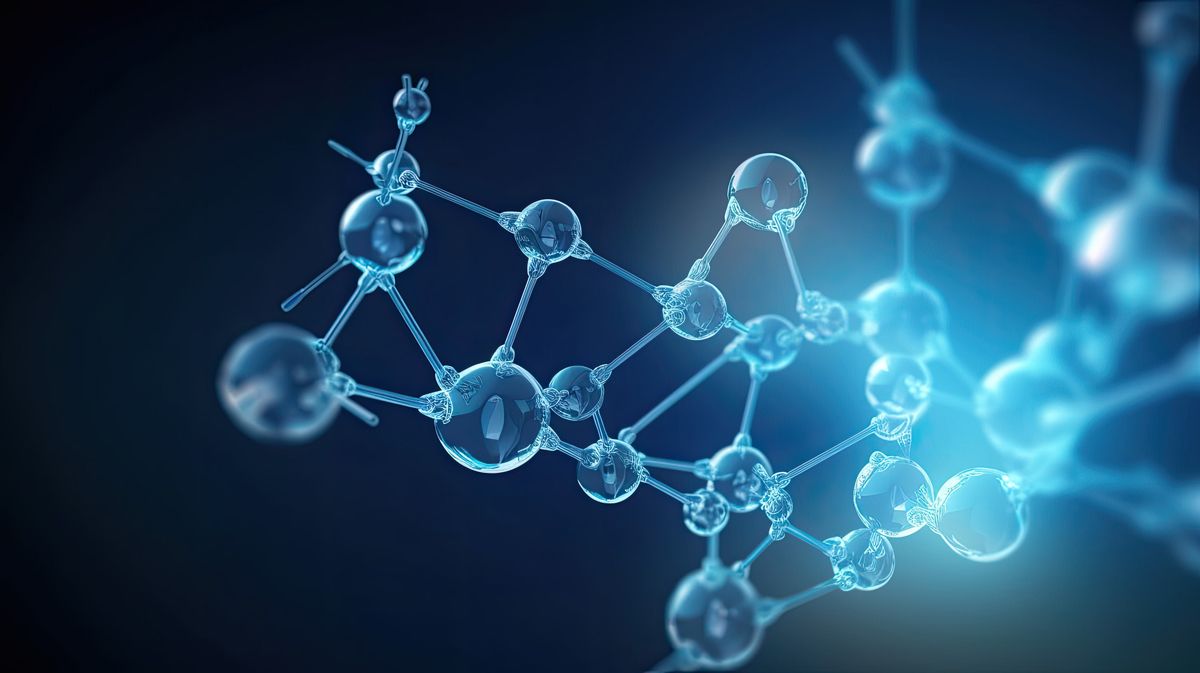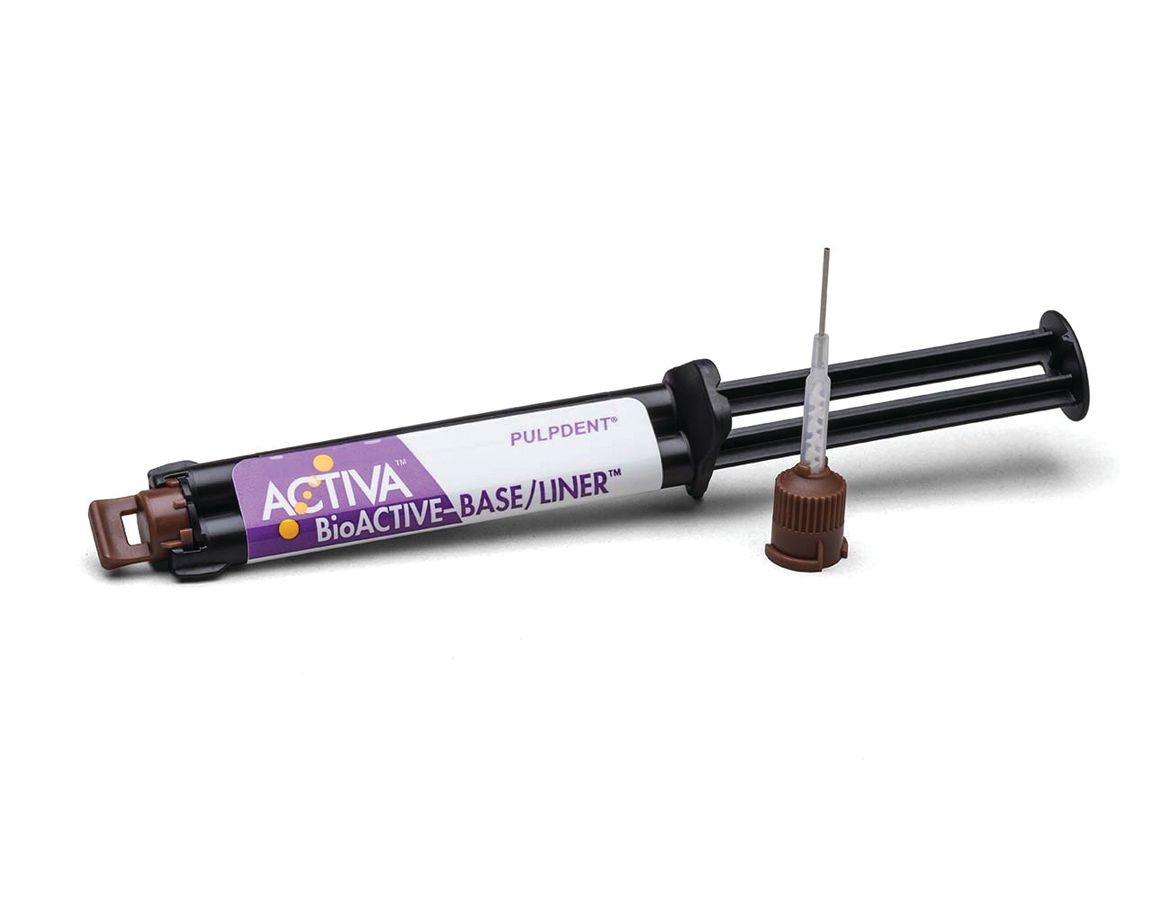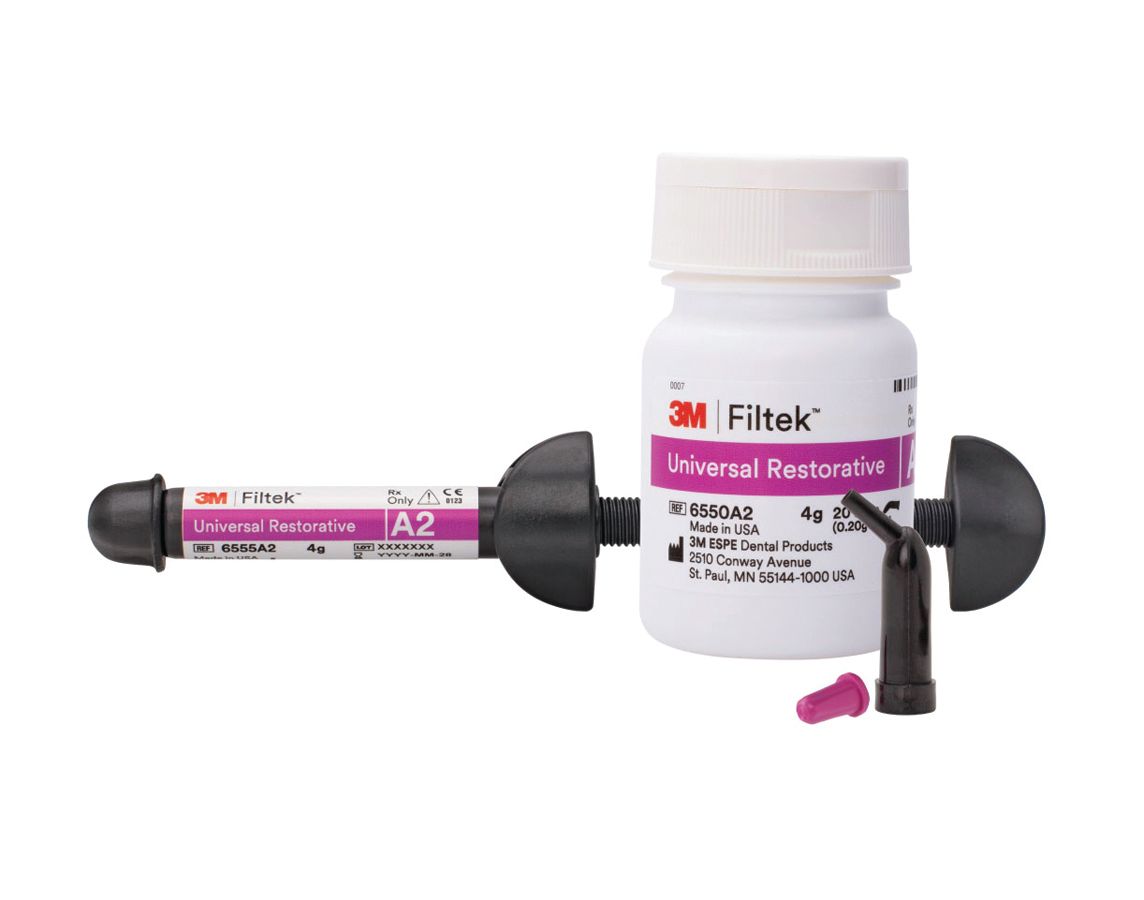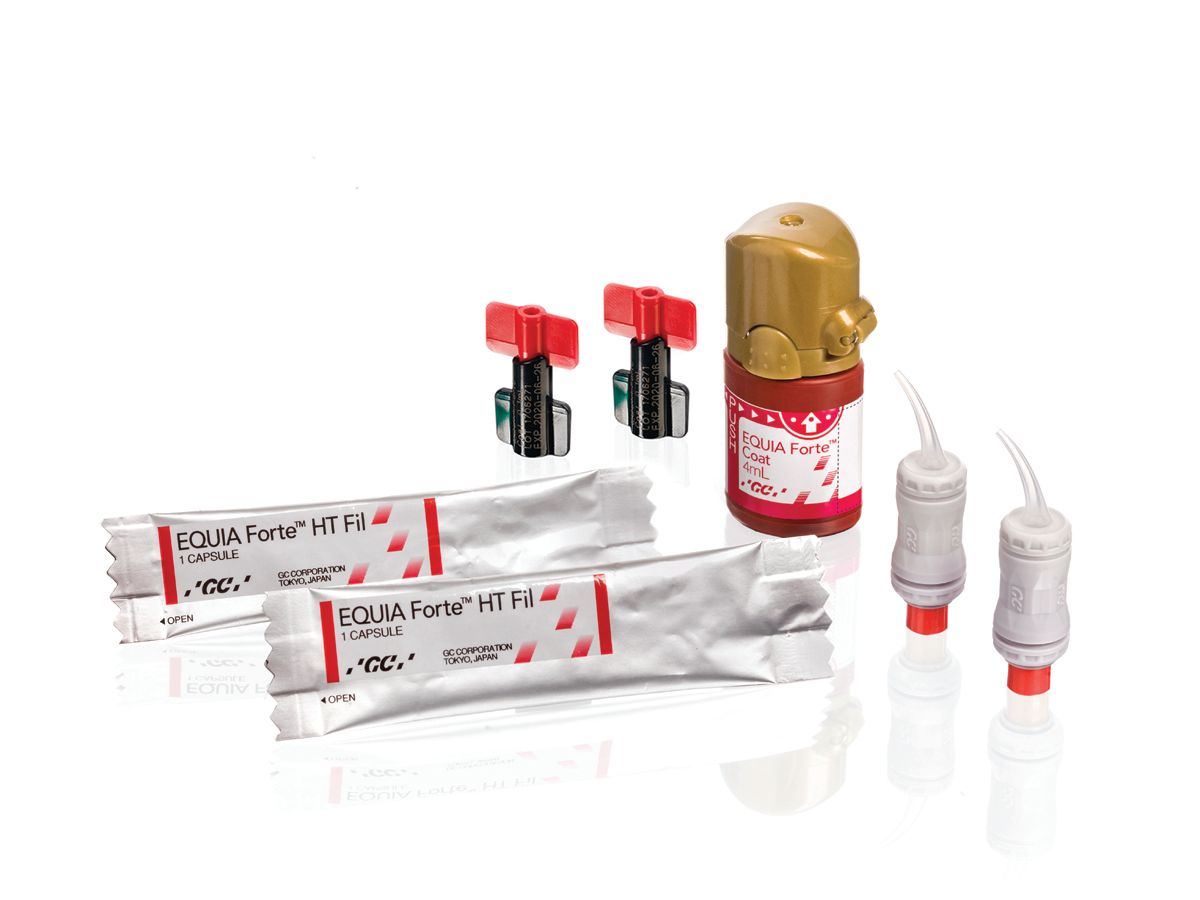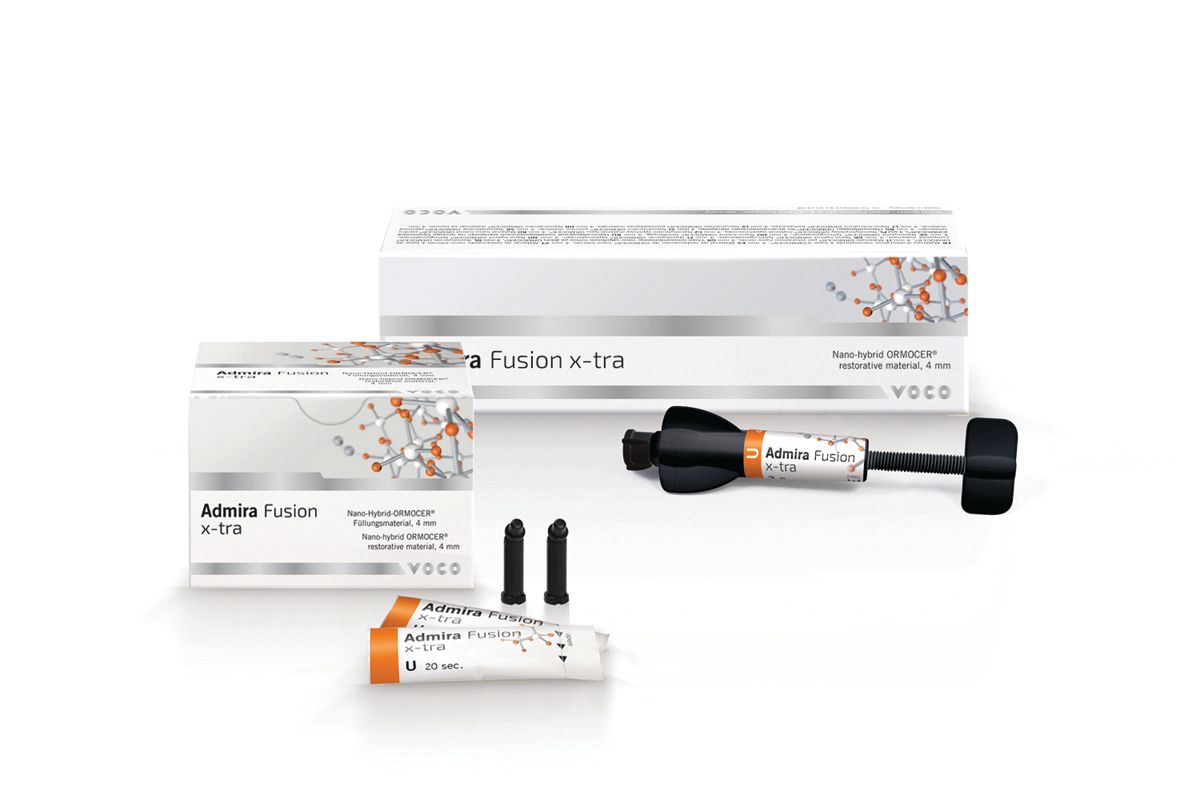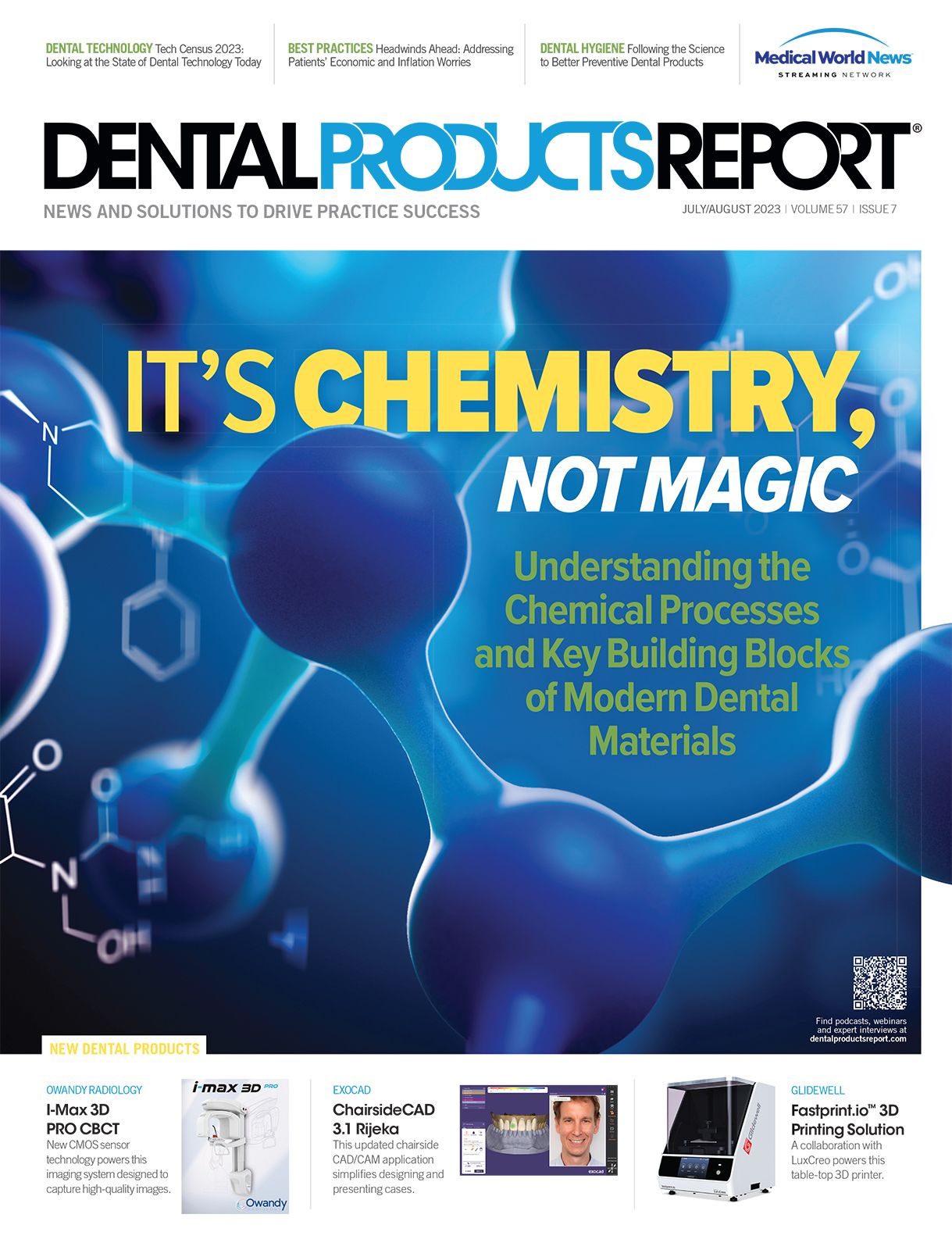Modern dental materials can inspire wonder and amazement. With a flash of blue light, previously soft substances harden into toothlike structures—just like magic.
However, although it sounds like a spell in a fantasy novel, polymerization is not enchantment; it’s chemistry. We spoke to materials science experts to reveal the chemical processes and how these fundamental building blocks affect what is happening with your materials.
So, How Do They Work?
We begin with an overview of some of the introductory chemistry that is involved with modern dental materials from Nate Lawson, DMD, PhD, MA, an associate professor of biomaterials, division director of the University of Alabama Birmingham (UAB) School of Dentistry, and program director of the UAB School of Dentistry Division of Biomaterials. As Dr Lawson explains:
- Dental materials are either polymers, ceramics, metals, or a combination of these. Most dentists practicing contemporary adhesive dentistry use ceramics, polymers, and composites of these 2 types of materials.
- Ceramics are composed of ionic or covalent bonds that typically form crystalline or amorphous structures. These ceramics may be very strong but are typically brittle, meaning they do not deform before fracture. Ceramics also have little water sorption, so they do not accumulate stains easily.
- Polymers are typically composed of long-chain and cross-linked molecules. They generally are more flexible and ductile than ceramic, meaning they can bend before cracking.
- Composites of ceramics and polymers can take advantage of both types of materials. The polymer (or resin) can typically act as the binder that holds the material together and provides some flexibility. The ceramic fillers give the composite strength.
Tim Sedlacek, research scientist and supervisor at BISCO, continues with the basics. He says most modern dental materials include a resin, a mixture of methacrylate monomers that are small and mobile enough to be flowable. Curing that resin means setting off a free radical polymerization chain reaction in which a series of electron transfers link the separate monomers into a much larger network. That chain reaction could be started by a light source exciting photoinitiators such as camphorquinone (ie, light cure), by an oxidation-reduction reaction of 2 or more chemicals in the resin (ie, self-cure), or both at the same time (ie, dual cure).
“Glass fillers measuring from the micrometers down to the nanometers can be mixed into the resin to make a paste with varying thickness, handling, and color desired for product use,” Sedlacek explains. “When the resin cures, the fillers are trapped in a polymer matrix—making the result a strong, durable, esthetic material.”
Brad Craig, PhD, senior division scientist at 3M, has developed numerous restorative dental materials in his time with the company, including their universal composites such as Filtek™ Supreme Ultra Universal Restorative and Filtek Universal Restorative; their adhesives, such as Adper™ Single Bond Plus Adhesive; resin-modified glass ionomers materials such as Ketac™ Nano Light-Curing Glass Ionomer Restorative; and bulk fills such as Filtek One Bulk Fill Restorative. His wide range of experience in chemistry includes nanotechnology, surface chemistries, composites, dental filler technologies, particle processing, hard tissue adhesives, and glass ionomer materials.
Beyond the Materials: Biochemistry in the Mouth
Chemistry and dentistry are intrinsically entwined, with some of the everyday materials that dentists use comprised of advanced chemical technology to deliver the results that patients and practitioners both desire. To understand the mouth, and everything that goes on inside it, one must have at least a basic understanding of where chemistry comes in. When the materials mix with the biochemistry of the tooth, magical things can happen. Here are just a few important terms and realities of chemistry in the mouth.
Enamel: The hard, protective shell of the tooth is the first line of defense from damage to the dentin and is vital in key oral processes against caries. So the question of just what enamel is made up of may be relevant. Enamel as a whole is calcium phosphate and is said to be even stronger than bone. This calcium phosphate crisscrosses over itself and bonds to create crystallites, which then form that strong structure of the enamel. Other elements here include 3% water and less than 1% of organic matrix, which help to further strengthen these chemistry-comprised crowns.1
Dentin: Digging underneath the enamel, we find dentin—the bone-like underbelly of the enamel. Much like the enamel, dentin takes much of its chemistry makeup from minerals, with much of its structure being hydroxylapatite. Dentin is also comprised of a larger percentage of organic material compared with enamel, and contains protein and collagen. It has an important job in supporting enamel and ensuring the tooth’s structure stays intact.2
Fluoride: Where would dentistry be without fluoride? This helpful mineral works hard to protect teeth from caries, utilizing its unique chemistry to remineralize and protect. When using a fluoride toothpaste, patients may not know it, but they are creating fluorapatite in their teeth. This calcium-phosphate-powered mineral combines with hydroxylapatite to strengthen enamel and prevent decay, especially for younger patients whose teeth are still developing. Fluoride also exists in the water we drink in the form of hexafluorosilicic acid and sodium hexafluorosilicate, which is a public dental health enhancement we couldn’t go without.3
Sugar: Known and loved, particularly by pediatric patients, compound sugar can be a huge threat to oral health, especially in the prevention of caries. Sugar, or sucrose, goes on a journey through the mouth, combining its protein molecule to create glycoproteins. These glycoproteins are particularly attractive to Streptococcus mutans which, in abundance, is a known cause for caries. Sucrose also goes on a long journey to eventually metabolize and polymerize through glycolysis, with the end result being the creation of lactic acid. This acid can eventually dissolve enamel, leading to the inevitable formation of cavities.4
Whether it’s the good, the bad, or even the ugly, these chemistry compounds make a huge impact on oral health. When taking the biochemistry of the teeth into consideration when deciding what materials to use for treatment, the potential for the best patient care is there. It’s up to the clinician to reach that full potential.
References
Duverger O, Beniash E, Morasso MI. Keratins as components of the enamel organic matrix. Matrix Biol. 2016;52-54:260-265. doi:10.1016/j.matbio.2015.12.007
Goldberg M, Kulkarni AB, Young M, Boskey A. Dentin: structure, composition and mineralization. Front Biosci (Elite Ed). 2011;3(2):711-735. doi:10.2741/e281
Medjedovic E, Medjedovic S, Deljo D, Sukalo A. Impact of fluoride on dental health quality. Mater Sociomed. 2015;27(6):395-398. doi:10.5455/msm.2015.27.395-398
Moynihan PJ, Kelly SA. Effect on caries of restricting sugars intake: systematic review to inform WHO guidelines. J Dent Res 2014;93(1):8-18. doi:10.1177/0022034513508954
Dr Craig describes most modern restorative ceramic dental materials, such as zirconia or lithium disilicate materials usually used for crowns and bridges, as high-tech, high-performance rocks. By contrast, modern-day adhesives, such as composites, cement, sealants, glass ionomers, and the like, are polymer (plastic) or polymer/ceramic (plastic/high-performance rock) composite materials. These materials, either polymers or polymer composites, comprise precursor reactive monomers, initiator systems, and inorganic filler materials.
Also, there are preventive products that protect, reinforce, and possibly heal the tooth structure. Sometimes these products contain fluoride only, Dr Craig says, or the products incorporate fluoride with calcium and/or phosphate release as well.
Koichiro Hirata, marketing department manager at Tokuyama Dental Corporation, agrees that for resin composite, the monomer, filler, and polymerization initiator are considered essential for physical properties. In addition, Tokuyama has leveraged the performance of its filler technology to enhance its performance.
“We research and develop our filler technology so the supra-nano spherical filler used in our resin composite will have enough mechanical strength and achieve high esthetic results,” Hirata says.
How Do Restorative Materials Leverage These Chemical Processes Today?
“Not all monomers or fillers are equal,” Sedlacek says. “Monomer choice affects strength, translucency, shrinkage, viscosity, and many other properties.”
He explains that various types and blends of fillers will affect properties, including radiopacity, polishability, and elasticity. In addition, surface treatment of the filler particles can make the difference between a durable, long-lasting material and something that degrades or allows water to seep through.
“We adjust the types and ratios of resin and filler to make one product ideal for filling cavities and another for luting a crown, all while optimizing longevity, biocompatibility, and esthetics,” Sedlacek says.
In the restorative materials Dr Craig describes, specific chemical processes are leveraged in significant ways to produce properties that, to the non-chemist, might seem magical. For example, focusing on the polymer or polymer/composite materials, these start as a precursor “resin” material with reactive groups triggered by a mechanism induced by the dental practitioner, such as light activation or mixing a 2-part system. The induction mechanism starts a chemical cure or acid/base interaction between ingredients on the 2 sides mixed together.
“The light energy interacting with photoinitiators, or the 2-part chemistry, starts the reaction [that] turns the liquid ‘resin’ into a solid polymer, or plastic material, often reinforced by the inorganic fillers [that] are surface modified to wet out and react with the resin matrix, giving the material its characteristic mechanical, physical, optical, adhesive, and wear properties once cured,” Dr Craig explains. “The overall behavior of these materials is dictated by the characteristics of both the resin and filler systems that comprise their component pieces.”
Dr Craig says the relative match of the fillers’ refractive index and resins helps dictate attributes for light-curing systems. These include depth of cure, meaning how deeply the light penetrates, and much of the esthetics and shading of the composites through interactions between light, the restorative material, and the tooth structure.
Nanotechnology, one of Dr Craig’s areas of expertise, enhances dental materials’ performance. These newer filler technologies, such as nanofillers, or materials below 100 nm in size, in dental composites improve mechanical and esthetic properties and can be designed to change the opacity of bulk filling materials through manipulation of refractive index changes in the resin matrix on curing.
“These systems take advantage of these small particles’ different interaction…or lack of interaction with visible light. This allows for a bulk filling material that can cure more deeply but looks more like the adjacent dentition once fully cured,” Dr Craig says.
Adhesive and cement chemistries utilize acidic chemistries to do their jobs. These chemistries help etch and chemically bind to the more basic tooth surface through the acid-base reactions between the tooth’s adhesive and hydroxyapatite.
“Advancements in resin chemistries have enabled lower shrinkage stress composites for bulk filling materials as well as radiopaque universal dental adhesives that wet out dentin effectively and seal off the underlying tooth structure, leading to a stable interface and strong bond,” Dr Craig explains.
The filler technology has much to do with their OMNICHROMA composites’ shade-matching characteristics. Using their patented supra-nano spherical filler technology, Hirata says that Tokuyama’s team can now easily and precisely control the filler size. These fillers are the exact size and shape needed to generate red to yellow color, creating the perfect match for all 16 VITA shades.
The ability to generate color naturally is a process called structural color, Hirata says. It occurs between the interaction of light waves and microscopic structures. This concept includes how soap bubbles, oil slicks, and CDs generate a color. Hirata explains that the surface color changes depending on how the light hits the surface.
Tokuyama’s Smart Chromatic Technology, achieved by uniformly sized spherical fillers, harnesses this natural phenomenon and recreates the red to yellow color of natural teeth. Using structural color in OMNICHROMA ensures no loss in chroma or drop in the value of restoration. Hirata says this approach made a significant splash in dental materials development and continues to do so.
“Our OMNICHROMA composites serve [as] one of the most exciting developments in recent years,” he notes. “After the groundbreaking launch of OMNICHROMA universal composite in 2019, we continued to improve the innovation by offering the same shade-matching capabilities in a traditional flowable, OMNICHROMA Flow in 2021, and finally, in 2023, our bulk fill—OMNICHROMA Flow BULK.”
However, the idea behind structural color sometimes needs a little help, depending on the restoration required and the surrounding dentition. OMNICHROMA’s ability to shade match is prefaced on there being tooth structure around it to recreate, Hirata says.
To help out in these situations, Tokuyama also developed BLOCKER as a companion product for OMNICHROMA. BLOCKER has pigmented color—a generic opaque, A-range shade.
“For example, on a large class IV, there is not a lot of tooth structure, and OMNICHROMA would potentially drop in value since it is pulling the darkness from the back of the throat. Using a thin layer of BLOCKER—minimum recommendation of 0.5 mm—to create a lingual shelf, …OMNICHROMA will pull a more natural tooth shade and the adjacent tooth structure for a seamless restoration,” Hirata says.
Fred Berk is president of Pulpdent Corporation, a family-owned dental research and manufacturing company in Watertown, Massachusetts, founded by Dr Harold Berk in 1947. Berk refers to Professor John McCabe and the visionary article “Smart Materials in Dentistry,” in which McCabe and colleagues point out that most traditional dental materials are hydrophobic, designed to have a relatively “neutral” existence in the mouth.1
Some might think if materials are passive and do not react with the oral environment, they will be more stable, have greater durability, and cause neither harm nor injury, Berk explains. However, McCabe et al suggest that this is an entirely negative approach and ignores the possibility that clinicians can achieve positive gains using active (“smart”) materials that behave more dynamically.1
It is a fundamental principle of science that biochemistry only occurs in the presence of water, and only materials that can transport water have the potential for dynamic behavior, Berk says. Only moisture-friendly materials can release and recharge significant amounts of calcium, phosphate, and fluoride to support apatite formation and the natural remineralization process. He explains that traditional dental composites are hydrophobic and do not have this capacity.
Berk says resins that stimulate remineralization of damaged tooth structure represent both the holy grail and the future of dental restorative materials.
“Pulpdent’s development of the phosphate-rich, hydrophilic Embrace WetBond [Pit & Fissure Sealant] resin chemistry was the innovation that allowed for the development of dynamic esthetic composites. In addition, Pulpdent overcame the brittleness of traditional composites by synthesizing a patented elastomeric resin molecule that provides fracture resistance to the cured resin,” Berk says.
In 2013, Pulpdent added glass ionomer to these novel chemistries and introduced Activa BioActive materials. Berk describes the product as a breakthrough that launched a new category of esthetic bioactive materials and a new conversation about the possibilities for smart, esthetic, restorative materials for dentistry.
“A true glass ionomer reaction requires a 2-part material, and the next challenge was to create a 1-part light cure bioactive material,” Berk explains. “Pulpdent synthesized and patented a novel methacrylate-functionalized calcium phosphate molecule with highly active remineralization properties, or Crysta MCP technology, that can be added to light cure or dual-cure materials. Pulpdent has incorporated Crysta into our Activa Presto stackable low-flow composite and Lime-Lite Enhanced light cure cavity liner.
“These ‘smart’ materials play a dynamic role in the mouth,” he continues, “and meet the challenge for moisture-friendly resin-based materials that are suitable for esthetic, durable, load-bearing applications.”
Glass Hybrids Are a Different Brand of Magic
Like the materials Sedlacek describes, glass hybrids also have magical chemistry. Gaurav Joshi, PhD, BDS, FICD, product marketing manager for GC America, explains that their EQUIA Forte®, EQUIA Forte Coat, and EQUIA Forte HT are all part of their glass hybrid restorative system.
The mixtures of chemistry result in a restorative system designed to deliver exceptional physical properties and the esthetics patients want. The bulk fill introduces ultrafine and highly reactive glass particles and longer acrylic-acid chains dispersed within the conventional glass ionomer structure. The self-adhesive coat contains a highly reactive multifunctional monomer that provides high surface hardness and wear resistance.
Dr Joshi says that the products are available in a unit-dose delivery (capsule), which contains fluoro-aluminosilicate glasses and polycarboxylic acids. The chemical reaction creates a restorative material that releases chemical ions that improve the health of the tooth they restore.
“What’s special about it and why we call it a glass hybrid is [that] it’s a mixture of different sizes of glass particles. So when the glass reacts with the acid, there is a chemical reaction, and ions are released. The ions include fluoride, calcium, and strontium, which help in remineralization of teeth,” Dr Joshi explains.
There are 2 main benefits of using a mixture of glass particles, according to Dr Joshi:
- It increases the strength of the material.
- It improves the handling of the material, reducing the “stickiness” that can occur with restorative materials.
Another significant benefit of using these materials is the self-adhesive nature of the restorative material. Dr Joshi says the materials chemically bond to the tooth without a bonding agent. When the restorative materials harden, the calcium from the tooth forms a bond with the carboxylic acid group and matures and strengthens over time. Per Dr Joshi, one would not see secondary decay associated with these materials.
“For resin composite, the interface between the tooth and the composite resin is the weakest part, and that’s where you see secondary caries over several years,” Dr Joshi says. “But with glass hybrids, that is the strongest part. So that chemical bond matures over the period, creating a hypermineralized interdiffusion zone.”
However, when the filling has been placed, it needs protection for the first 24 hours, Dr Joshi explains. The system includes a resin coat that dentists place on top of the glass filling. The coat is a nanofilled resin with a film thickness as low as 35 to 40 μm. Dr Joshi explains that the coat provides wear resistance, protecting the glass body against acid and abrasion. When the coat wears off, the glass hybrid undergoes a unique second maturation, increasing the restoration’s hardness.
“When the initial maturation part of the chemical reaction [of the filling] is taking place, and the material is relatively weaker and developing its strength, this resin coat protects it during that initial phase,” Dr Joshi explains. “[Data from] our studies estimate the coat to stay there for about 6 months. It will wear away eventually because it’s such a thin coat, but by the time it wears out, it has done its job because we place it to give the restoration time to mature.”
Another benefit of glass hybrid chemistry is an ion exchange between the ions in mouth saliva and the restoration. Dr Joshi says their study findings show that glass hybrids can be recharged with fluoride because of this exchange.
“So if the patient is using fluoridated toothpaste or mouthwash, these materials reabsorb fluoride and rerelease fluoride into the mouth,” Dr Joshi says.
Because of the mixture of glass materials, glass hybrid technology is appropriate for stress-bearing areas, smaller Class I or smaller Class II, Class V, or occlusal areas, Dr Joshi says. The materials are also suitable as liners or small core build-ups, he notes. In addition, he sees them also as excellent materials to consider when replacing amalgams because they hold up well in occlusal areas.
Although there is some overlap in indications with resin-modified glass ionomers, glass hybrids are excellent when releasing fluoride and the compressive strength of the material is a concern. Therefore, he thinks the material you choose will depend on the situation.
Dr Joshi says another notable chemical feature of the materials is that they act as smart materials. In this instance, the fluoro-aluminosilicate glass releases more fluoride into oral environments with a low pH and higher acidity.
Based on this characteristic, Dr Joshi says these materials are excellent for compromised situations, where patients have an increased risk for caries, and for geriatric or pediatric patients, when dentists cannot isolate the tooth properly. It also works when the preparation is in an area of the mouth that is tricky to isolate.
“If you have a wiggly child in the chair and you need to get the child in and out quickly, so you don’t have time for a rubber dam or you don’t even have time to isolate, there is a high chance you will contaminate the tooth and then the restoration,” Dr Joshi says. “[As] these materials are moisture tolerant, they can bond in saliva. So even if isolation is not ideal, these materials work.”
The Work of R&D Is Where a Lot of the Magic Happens
Matthias Mehring, PhD, knowledge communication manager for VOCO GmbH, explains that research and development (R&D) plays a significant role in why the chemistry of the composites is what it is. At a basic level, all dental composite materials have filler particles and methacrylate resins. Changing characteristics about either of these things is how you play with the chemistry. For example, changing the filler material type or the size and shape changes its behavior during polymerization. Also, adding more or using less filler changes how the material behaves and the benefits it provides.
In addition, the R&D team also can play with the resin’s viscosity to get various behaviors out of the material. Resins with thinner viscosity behave differently from those with thicker ones. Playing with the thickness is one of the things that materials scientists do to get different results.
Whenever you heat something, it changes the viscosity, Dr Mehring says. Heating dental materials benefits dentists in 2 ways. First, Dr Mehring says dentists tell them the handling is easier and smoother. As preparations are not straightforward and require filling small holes and gaps, improving the handling helps, he says.
“You can compare it a little bit with butter. If you remove the butter from the fridge and want to spread it on bread, it’s hard. You can do it, but it takes some time. If it is warm, it’s easier,” Dr Mehring explains. “It’s the same thing we are doing with the restorative.”
Second, heating materials also benefits dentists. For example, VOCO’s thermo-viscous technology makes the composite flowable so it gets into the areas of the cavity that are hard to see or reach.
“To clarify, it doesn’t become soft, like the other composites. Instead we optimize the resin using specific methacrylate, which can become more liquid,” Dr Mehring says.
He explains that this chemistry does not happen accidentally or easily. The R&D team tests different resins with different fillers to get their desired effects. It took a lot of testing to find the methacrylate resin that behaved properly, not only in its conversion to a flowable composite with heat but also for strength and esthetics.
“You have to find the one that’s still maintaining all those other benefits but now can [become] flowable when it’s hot, which is very specific. And you test, test, test, test, test,” Dr Mehring says.
The R&D team also developed the nanohybrid ORMOCER restorative materials that make up the Admira Fusion line. ORMOCER stands for organically modified ceramics. The resin is mostly ceramic but with enough methacrylate to remain compatible with all the other direct restorative materials used in dentistry. Dr Mehring says the challenge is to create a material that uses this new resin but still has the esthetic and handling aspects that dentists require. However, the ORMOCER nanohybrid materials achieve that with the added benefit of higher biocompatibility than resins with more methacrylate.
Another positive effect of this composition is that it reduces the unavoidable shrinkage that occurs during polymerization. Dr Mehring explains that there is always shrinkage because single-resin monomers do not need the same amount of space they needed before, as they are now connected. However, the monomers in ORMOCER are more significant, meaning they do not shrink as much once they join.
“This, of course, ends up with benefits for the dentists. If you have low shrinkage, there isn’t any risk of gaps after curing, which in turn does not allow marginal leakage to occur,” Dr Mehring says.
Moreover, the R&D team leverages the behavior of nanohybrid technology. Nanohybrid technology allows composites to have over 80% filler in a composite.
Also, when the fillers are nanoparticle sized, they connect again to form clusters that mimic the behavior of larger particles. Moreover, the fillers chemically connect with the resin when coated with silane. This cross-linking is called functionalization, Dr Mehring says.
“This gives you, in the end, the strength that is required on the one hand because the fillers are there, because you can put more in with the nanoparticles, but at the same time, we are coating them and they have an additional connection also to the resin,” Dr Mehring says.
Additionally, the R&D team is continually modifying the properties of their resins and fillers to improve things like esthetics. For example, the Admira Fusion x-tra, VOCO’s omnichromatic, single-shade nanohybrid ORMOCER restorative material with a 4-mm depth of cure, can match the entire VITA shade range with a single universal shade.
“We want to make the dentists’ lives easier,” Dr Mehring says about the attempts to optimize materials chemistry. “Time is money, right?”
What Is Next for Materials Development
Hirata’s focus is on Tokuyama’s future development. Tokuyama’s scientists will continue improving their products in new areas where dental materials are popular.
“Our mission now is to improve the biocompatibility of our products, especially our resin composites,” Hirata says. “After the development of color compatibility with our OMNICHROMA family, Tokuyama Dental’s R&D [team] is energized and focused on continuing the development of solutions that may radically benefit the dental industry.”
Sedlacek would group development into 2 areas: first, improving performance and next, potentially adding new features.
“On one hand, we can explore new types and combinations of those monomers and fillers to push the boundaries of material performance, meaning stronger, faster, easier. Recent examples include new sintered or prepolymerized fillers to overcome composite formula barriers, amine-free reactions for color stability, and new monomer synthesis to improve bonding or reaction kinetics,” Sedlacek says.
“On the other hand,” he continues, “we can add new features, especially in the area of bioactivity. Over time, we will see more materials that can integrate with dental tissue, combat bacterial growth, and reverse demineralization. They will build on the same bedrock of resin-powder pastes, with materials added to improve the long-term quality of restorations and ultimately patient experience.”
3D printing is a new method for fabricating restorations, Dr Lawson explains. Currently, the materials that can be printed in office and by most dental labs are resins (polymers) or filler resins (composites of polymers with ceramic fillers). Polymers will always have limitations in their strength and staining. 3D printing of ceramics is on the horizon, Dr Lawson explains.
“Currently, 3D-printed ceramics exist in experimental laboratories and are starting to be available for commercial purchase—probably with a large price tag,” Dr Lawson says. “They must be printed with a resin binder that is burned out during heat treatment of the ceramic, which has led to inferior properties as compared with milled ceramic.”
Dr Craig thinks additional simplification and ease of use for the practitioner have been an ongoing trend with dental materials for many years. He believes that trend is unlikely to change. However, he says the form of the delivery of dental restorative materials and the nature of the procedure may change, along with additional advancements in the properties of the materials, be that in form or function.
“Researchers at various companies and institutions are always pushing to improve dental materials’ properties, delivery, and ease of use. There is also always a desire to add additional functionality to materials so that they can restore and do something else,” Dr Craig says. “We are likely to see additional improvements through both traditional dental procedural workflows and materials, but also will possibly experience improvements through the assistance of digital tools to aid in the planning, design, and implementation of dental restorative procedures.”
Dr Joshi thinks that the indications for glass hybrids will continue to increase. In particular, he sees the materials improving for larger Class II restorations, particularly those that are missing a cusp.
“One of the advancements could be self-adhesive restoratives for cusp build-up. Right now, these materials are not indicated for cusps. But with the advancement of chemistry and new formulations, we expect these materials will evolve in the future,” Dr Joshi says.
Dr Mehring sees further improvements in the shapes and sizes of the fillers to create optical properties that play around with the ambient environmental light. The idea is to have the restored material be indistinguishable from the surrounding dentition. By optimizing how the light travels through the material and how the brain sees and reflects it, Dr Mehring thinks this will continue to improve. He also sees materials development continuing to simplify shade selection and increasing the depth of cure to an unlimited level.
“This last one will not come in the next days or years, but it would be to get rid of adhesive. We always need the adhesive to stick the composite to the tooth. But it would reduce the risk of failures and improve the esthetics. So then you have only 1 material to place and not 2,” Dr Mehring says. “These are the things I see coming in the future.”
Pulpdent is applying their novel chemistries to other materials, Berk says. For example, progress is being made for bonding agents with mineralization potential and antibacterial properties that discourage matrix metalloproteinases (MMPs) and extend the life expectancy of composite restorations; bioactive CAD/CAM blocks; resorbable bone cement that stimulates remineralization and is replaced by natural hard tissue; orthodontic adhesives; packable composites; pulp capping agents; and other applications.
“These innovations,” Berk says, “transition dentistry from a passive, reactive repair model intended to do no harm to an active approach using dynamic materials that support the natural remineralization process and preventive dental care that is better for our patients.”
Reference
McCabe JF, Yan Z, Al Naimi OT, Mahmoud G, Rolland SL. Smart materials in dentistry. Aust Dent J. 2011;56(suppl 1):3-10. doi:10.1111/j.1834-7819.2010.01291.x
